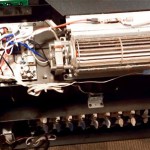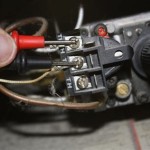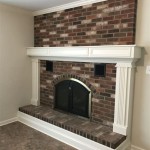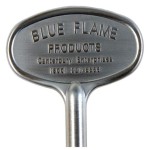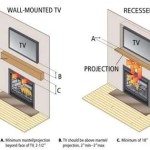Stainless Steel Fireplace Surrounds: A Durable and Aesthetic Choice
Fireplace surrounds serve a dual purpose: they enhance the aesthetic appeal of a fireplace and provide a protective barrier around the firebox. Among the various materials available for fireplace surrounds, stainless steel stands out due to its durability, modern aesthetic, and resistance to heat and corrosion. This article explores the characteristics, benefits, installation considerations, and maintenance of stainless steel fireplace surrounds.
Material Properties and Advantages of Stainless Steel
Stainless steel is an alloy primarily composed of iron, chromium, and nickel, with other elements added to enhance specific properties. The chromium content, typically at least 10.5%, forms a passive layer of chromium oxide on the surface, which protects the underlying metal from corrosion. This passive layer is self-healing, meaning that if the surface is scratched or damaged, the chromium oxide layer will reform, maintaining the steel's corrosion resistance.
Several grades of stainless steel are commonly used in fireplace surrounds, each offering varying levels of corrosion resistance and heat resistance. Grade 304 stainless steel, also known as 18/8 stainless steel due to its 18% chromium and 8% nickel content, is a versatile and widely used grade. It offers good corrosion resistance in a variety of environments and is relatively easy to weld and fabricate. Grade 316 stainless steel, which contains molybdenum, provides even greater corrosion resistance, particularly in chloride-rich environments. This makes it suitable for coastal areas or applications where exposure to de-icing salts is a concern. Other grades, such as 430 stainless steel, may be used for specific applications where lower cost is a primary consideration, but they typically offer lower corrosion resistance than 304 or 316.
The advantages of using stainless steel for fireplace surrounds are numerous. First, its inherent durability ensures a long lifespan, making it a cost-effective choice in the long run. Stainless steel is resistant to dents, scratches, and other forms of physical damage, ensuring that the surround maintains its appearance over time. Second, stainless steel is highly resistant to heat and fire. It can withstand the high temperatures generated by a fireplace without warping, melting, or degrading. Third, stainless steel is non-combustible, which means it will not contribute to the spread of fire. This is a crucial safety consideration for any fireplace surround material.
Furthermore, stainless steel is relatively easy to clean and maintain. Its smooth, non-porous surface resists staining and dirt buildup. Regular cleaning with a mild detergent and water is typically sufficient to keep the surround looking its best. Unlike some other materials, stainless steel does not require sealing or special treatments to maintain its appearance. Finally, stainless steel is a recyclable material, making it an environmentally responsible choice. At the end of its lifespan, a stainless steel fireplace surround can be recycled and used to produce new steel products, reducing the demand for virgin materials.
Design Considerations and Aesthetic Versatility
Stainless steel fireplace surrounds offer a wide range of design possibilities, making them suitable for various architectural styles. The clean, modern aesthetic of stainless steel complements contemporary and minimalist designs. Its metallic sheen adds a touch of sophistication and elegance to any room. The reflective properties of stainless steel can also enhance the brightness and visual spaciousness of a room.
Stainless steel can be fabricated into various shapes and sizes, allowing for custom designs that perfectly fit the fireplace and surrounding space. It can be cut, bent, welded, and polished to create intricate patterns and details. Different finishes, such as brushed, polished, satin, or mirrored, can be applied to achieve different aesthetic effects. A brushed finish, for example, provides a subtle, understated look, while a polished finish creates a high-gloss, reflective surface.
The versatility of stainless steel extends to its ability to be combined with other materials. It can be seamlessly integrated with stone, brick, glass, or wood to create a unique and visually appealing fireplace surround. For example, a stainless steel surround can be paired with a stone hearth to create a rustic-modern look. Or, it can be combined with glass panels to create a sleek and contemporary design. The possibilities are virtually endless, allowing homeowners to create a fireplace surround that reflects their personal style and complements the overall design of their home.
Beyond its aesthetic appeal, the design of a stainless steel fireplace surround must also consider functionality. The surround should be designed to effectively protect the surrounding walls and floor from heat and sparks. It should also provide adequate clearance from combustible materials to prevent fire hazards. The design should also facilitate easy cleaning and maintenance. Smooth, seamless surfaces are easier to clean than textured or intricate surfaces. Access panels or removable sections may be incorporated into the design to allow for easy access to the firebox for cleaning and maintenance.
When selecting a stainless steel fireplace surround, it is important to consider the size and shape of the fireplace opening, the style of the fireplace itself, and the overall design of the room. A surround that is too small or too large will look awkward and out of proportion. The style of the surround should complement the style of the fireplace and the surrounding décor. A modern fireplace might look best with a sleek, minimalist stainless steel surround, while a traditional fireplace might be better suited to a more ornate surround with decorative details.
Installation and Maintenance Procedures
Proper installation is crucial for the performance and longevity of a stainless steel fireplace surround. It is generally recommended that installation be performed by a qualified professional with experience in fireplace installation and metalworking. This ensures that the surround is installed correctly and safely, minimizing the risk of fire hazards or structural problems.
Before installation, the existing fireplace opening should be carefully measured to ensure that the new surround will fit properly. The surrounding walls and floor should be inspected for any signs of damage or deterioration. Any necessary repairs should be made before the surround is installed. The installer will typically use a combination of mechanical fasteners, such as screws or bolts, and adhesives to secure the surround to the wall. It is important to use fasteners and adhesives that are compatible with stainless steel and that can withstand the high temperatures generated by the fireplace.
Proper ventilation is essential for the safe and efficient operation of a fireplace. The installer should ensure that the surround does not obstruct any ventilation openings or air inlets. Adequate air circulation is necessary to prevent overheating and to ensure proper combustion. In some cases, it may be necessary to modify the surround to improve ventilation. This may involve adding ventilation slots or louvers to the surround.
Once the surround is installed, it should be inspected to ensure that it is properly aligned and securely fastened. Any gaps or cracks should be sealed with a fire-resistant sealant. The area around the fireplace should be cleaned to remove any debris or dust. Regular maintenance is essential to keep a stainless steel fireplace surround looking its best and to ensure its continued performance. Regular cleaning with a mild detergent and water is typically sufficient to remove dirt and grime. A soft cloth or sponge should be used to avoid scratching the surface. For stubborn stains, a stainless steel cleaner can be used. However, it is important to follow the manufacturer's instructions carefully to avoid damaging the finish.
Avoid using abrasive cleaners or scouring pads, as these can scratch the surface of the stainless steel. It is also important to avoid using cleaners that contain chlorine or bleach, as these can damage the stainless steel. After cleaning, the surround should be rinsed with clean water and dried thoroughly. Regular inspection of the surround is also important. Check for any signs of damage, such as dents, scratches, or corrosion. Any necessary repairs should be made promptly to prevent further damage. If the surround is exposed to harsh weather conditions, it may be necessary to apply a sealant or protective coating to prevent corrosion. A stainless steel polish can be used to restore the shine and luster of the surround. Regular maintenance will help to ensure that the stainless steel fireplace surround remains a beautiful and functional addition to the home for many years to come.

Stainless Steel Fireplace Surround Photos Ideas Houzz

Modern Fireplace Mantel Shelf In Brushed Stainless Steel

Stainless Steel Fireplace Surrounds

Twenty6 Fi SÓlas Contemporary Fireplaces

Some Stainless Steel Home Decor Items To Beautify Your Contemporary Fireplace Designs Design

Robert N Wohlfeld Inc

3 Sided Fireplace Surround Kit In Brushed Stainless Steel

Stunning Interiors With Steel Fireplace Surround Focal Points

Fireplaces Aluminum Stainless And Copper
Steel Fireplace Surround S By Kramer Design Studio Randall Wescover Fireplaces
Related Posts


